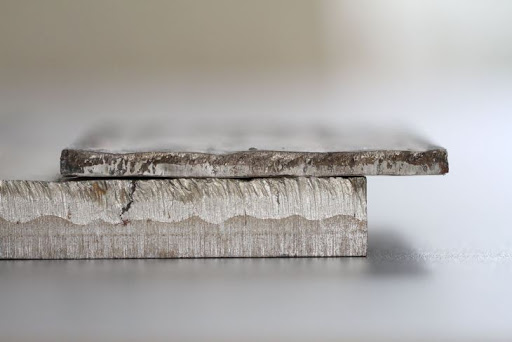Bimetallic wear-resistant steel plate refers to the use of surfacing welding method to form a bimetal composite wear-resistant steel plate by surfacing high-alloy wear-resistant layer on the substrate surface. . It can be used to process various wear parts and lining boards.
- The substrate of the bimetal wear-resistant steel plate can be selected from the following steel plate materials: carbon structure steel plate and low alloy structure steel plate, heat-resistant low alloy structure steel plate, heat-resistant stainless steel plate.
- Wear-resistant layer: alloy layer (thickness of 3mm ~ 15mm) formed by surfacing welding, which plays a role in resisting wear.
Bimetallic carbide plate features
- Excellent machinability (various wear-resistant parts can be manufactured by cutting, bending and welding like ordinary steel plates)
- Wide application range
Metallurgical industry: mainly used in sintering and iron making, silo lining, feed truck, hose, distributor and base, hopper, pipeline, pump shell, crusher parts, slag trough, fan, vibrating screen, etc .;
Cement industry: impact discs, pipes, pump casings, mill linings, crusher parts, slag tanks, various chassis, vibrating screens, etc.
Power industry: ash pipes, silos, fan blades, burner lines, feed chutes and hopper linings, crusher parts, coal mill parts, air treatment systems and transporters.
Coal industry: mainly used for coal washing and mining and mineral transportation, truck cargo tank lining, silo lining, conveying tank lining, crusher department, cover plate, wear bar and wear plate.
High-chromium surfacing bimetallic composite steel plate/Bimetallic carbide plate is a composite wear-resistant material produced by Beijing Naimer Technology: alloy layer macro hardness HRC57-65, carbide hardness HV1400-1800; wear resistance is 20-25 times that of low-carbon steel, 8-12 times of stainless steel and high manganese steel, which is more than 1.5 times of the general wear-resistant steel plate; high temperature resistance ordinary type <600 ℃, high temperature type <1000 ℃.

